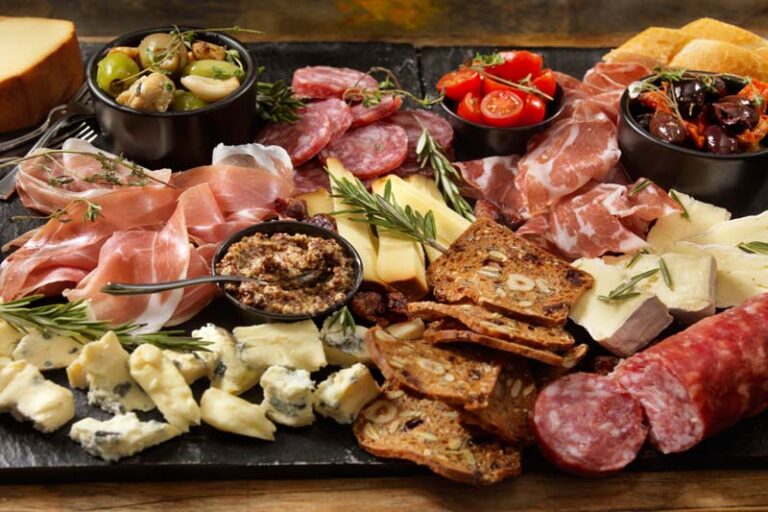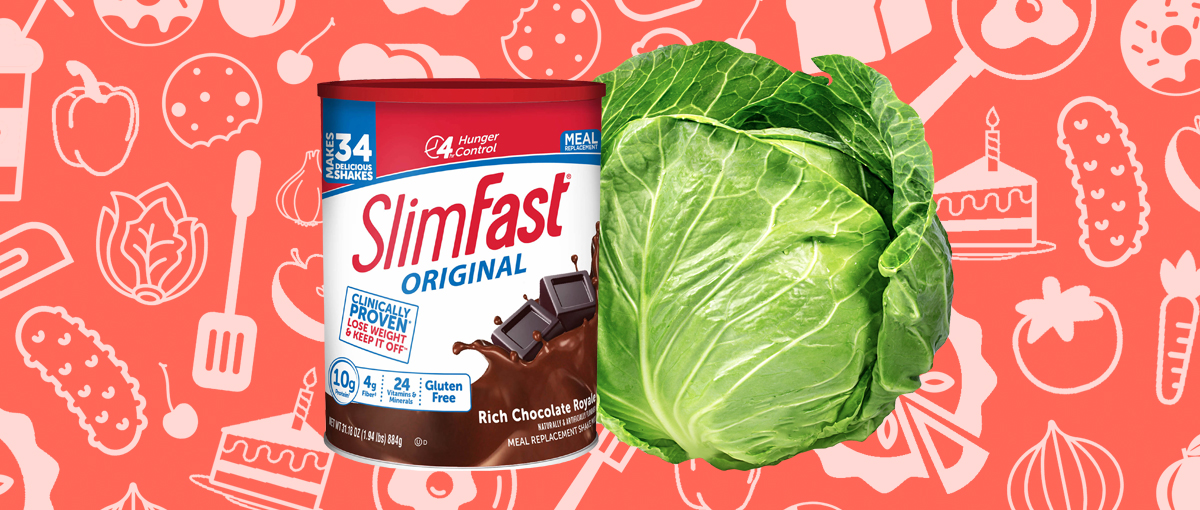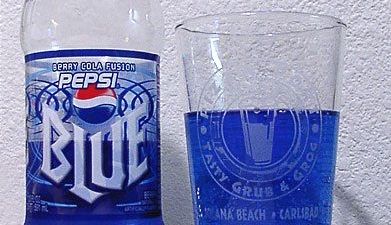All cheese — from the freshest mozzarella to the moldiest blue — is made with the same ingredients and through the same basic process. You need milk, of course. And that milk can come from a variety of different sources; goats, sheep, buffalo, yaks, cows, the list goes on. In addition to milk, you need an enzyme that will make it coagulate and set. You also need to be able to expel excess water through cutting and heating. You need to be able to press it into its preferred shape, and then you need to be able to salt it. From there, you can age, smoke, flavor, or eat the cheese as you see fit. And that’s how the cheese gets made.
But the history of cheese, like the history of food more generally, is a lot more complicated than its basic ingredients. Human beings have been consuming cheese for at least 8,000 years. The Ancient World loved it. Possibly arriving in Ancient Rome via Asia Minor, the Roman Empire exploded with artisanal cheese making, which it exported all over the empire. From Rome, France and England took up the mantle of fine cheese making until the Swiss and the Americans came along and began making factory-produced cheese at scale. From the earliest cheese curds to the crispiest Cheetos, the history of cheese is one that spans human history and taste.
The history of cheese starts in a sheep’s stomach.
No one knows for certain where and when cheese-making started. It goes back so far in human history, its origins aren’t recorded. But experts in cheese history do think they know what the earliest type of cheese might have been, as well as how it was likely produced. The origins of cheese are probably located in a sheep’s stomach. How that could have been is actually pretty simple.
Stomachs were perfect for transporting milk.
Sheep were first domesticated around 8000 BCE. In addition to wool, meat, and milk, sheep stomachs were a usable item from the creature. Stomachs, when removed from bodies, would be used to transport fresh milk. Unbeknownst to the early milk transporters, though, sheep stomachs contain rennin, an enzyme used to make cheese. Across long distances, the fresh milk contained in the stomachs might curdle – but the rennin would turn it into curds rather than just spoiled milk. Cheese curds were probably the first kind of cheese to be eaten. And if it wasn’t a sheep stomach that started it all, it might have been some other milking animal, like a cow, buffalo, or goat.
There’s a common myth about an Arabian nomad inventing cheese.
He did it crossing the Arabian Desert.
Although it’s impossible to say where the first ever cheese curds were produced, there’s a mythical shepherd who often gets credit. His myth shows up all over the pages of the internet and book pages dedicated to cheese alike. According to it, it was an Arabian shepherd boy (a merchant in some versions, a nomad in others), traveling in the heat of the Arabian Desert with his flock, who first created curds. A stomach full of spoiling milk at his side, the shepherd unknowingly allowed the spoiled milk to curdle with the natural rennin in the stomach. Whether or not that shepherd existed, he is the mythical father of all the cheese that came after.
Archaeological evidence suggests humans have been making cheese for somewhere around 8,000 years.
Even though it’s impossible to say precisely when and where cheese comes from, the archaeological record is rich with evidence of cheese making. For example, analysis of pottery found in Croatia shows evidence of fermented dairy products, like cheese and yogurt. Ancient Egyptians’ love of cheese is well recorded. They made sour cheeses in addition to a kind of cottage cheese, and there’s evidence of it in the tomb of King Aha from the First Dynasty (c. 3049 BCE). In his tomb, anthropologists found two mugs containing cheese.
It was all over the ancient world.
And that’s just to name a couple examples from the ancient world. The Ancient Romans, Ancient Greeks, Sumerians, and other peoples from Asia Minor to Europe enjoyed the fermented dairy substance.
The cheese we now know as feta makes an appearance in Homer’s Odyssey.
If you remember much about the 8th-century BCE Hellenic epic, the Odyssey, you probably remembered the one-eyed giant Polyphemus. What you might not remember – or have even noticed – is that Polyphemus, a shepherd, lives in a cave filled with cheese. In the cave, “his cheese-racks were loaded with cheeses, and he had more lambs and kids than his pens could hold… as for his dairy, all the vessels, bowls, and milk pails in which he milked, were swimming with whey.” Later, Odysseus and his men feast with the cyclops, and Polyphemus “curdled half the milk and set it aside in wicker strainers.” He drank the other half.
Polyphemus has all the ingredients for feta.
There are a few tells in Homer’s description of Polyphemus’s dwelling that point to the cyclops making the cheese we now call feta. For one thing, Polyphemus keeps goats and sheep, and feta is made exclusively with sheeps’ milk or a mixture of sheep and goats’ milk. For another thing, Polyphemus keeps “vessels” around for his cheese, which are needed to shape soft feta. Finally, the one-eyed giant curdles the milk over high heat on an open flame. This curdling is the first step in creating feta.
The Ancient Romans had sophisticated cheese-making practices.
It’s no historical secret: the Ancient Romans loved cheese. Romans of means might have a whole separate kitchen just for cheesemaking, called a caseale. Larger town centers in Rome had special operations for smoking cheese, and the Romans are believed to have been the first to age and store it.
They shipped cheese all over the empire.
Given Rome’s vastness, and the fact that cheese was shipped to legions at distance outposts of the empire, Roman cheesemaking, smoking, aging, and storing began to permeate other cultures. Some believe, for example, that the French learned what they know about cheesemaking from the Romans.
You can thank monks for some of the best cheeses we have today.
… like Roquefort and Münster.
Monasteries are largely self-sustaining communities. Monks make their own wine; they make their own bread; they grow their own vegetables; they make their own cheese. And they’ve been doing so for centuries. But, thankfully, the cheese they make has made its way beyond monastery walls. Münster cheese, for example, is named after the Latin word for monastery, monastarium due to its origins in a German monastery in the 14th Century. Along with others, Roquefort and tête de moine (Monk’s Head) also come to us via monasteries.
Historically, caves were the preferred places to age cheese.
Now a cave is whatever you want it to be.
Before refrigeration, cheese makers needed cool, dry places to age and ripen their wares. Some cheeses, like the moldy Roquefort, have to be aged in caves to be officially considered a member of their cheese family. Homer’s 8th-Century BCE Odyssey locates caves as the site of feta making, too. Nowadays, a “cheese cave” may refer to a literal geographic feature, but it is just as likely to refer to a fridge with a constant temperature, specific moisture level, and a certain amount of fresh air.
When pasta first emerged in Italy, cheese was its primary – and sometimes only – topping.
Macaroni and cheese has a long history.
Before red sauce was even a twinkle in Italians’ eyes, cheese served as the go-to pasta topping. According to Italian food historians Alberto Capatti and Massimo Montanari, “[cheese] – possibly enriched with spices – was the obligatory flavoring for pasta from the outset.” Grated or sliced, Parmesan cheese, sometimes mixed with sugar and cinnamon, flowed over macaroni from the Middle Ages into the early 19th century, when red sauce was first introduced.
Cheese had a “reputation makeover” in the Middle Ages.
It had a bad rep for a little while.
Sometime between Antiquity and the Middle Ages, cheese developed a bit of a bad reputation in Italy, where medical professionals had begun to view it with suspicion. Coagulation and fermentation were mysterious processes; therefore, so was the hardened milk substance they produce. On top of the mystery of cheese, some in the upper classes viewed it as peasant food.
However, despite the medical warnings, people fell back in love with cheese in the Middle Ages, and recipes for prepared cheese – like spit-roasted cheese appear in some of the earliest recipe collections from the Italian peninsula.
Goat cheese may have been the first kind in North America.
The Pilgrims loved cheese.
Though it can’t be stated for certain, it’s possible that the first source of cheese in the so-called “New World” was goats’ milk cheese. Columbus and his crew carried goats aboard the Nina and the Pinta as the source of fresh milk for their colonial expedition in 1492. And if cheese didn’t start with Columbus, then it definitely did with the Mayflower. There’s a record of cheese on board the ship when it voyaged to New England in 1620.
Gruyere was born in the mountains of Switzerland out of necessity.
Every kind of cheese has a unique origin story.
We live in an era in which more than 1,000 types of cheese are available to us. And each of those cheeses has its own unique origin story related to the people and region that it comes from. Swiss Gruyere is no exception. It’s said that in the Middle Ages, peasants in the Gruyere region of Southwestern Switzerland created a cheese-making process that served their own particular needs. Rather than every villager climbing the steep slopes of the region to milk their cows daily, a few individuals were appointed to the milking and cheese making for the whole village. These innovators created a way to make the long-lasting, low-moisture cheese we know as Gruyere. They did so by producing pea-sized curds from the fresh milk, which they cooked at extremely high temperatures for long periods of time. This got as much moisture out as possible. It also gave the world Gruyere.
The first ever commercial “cheese factory” was built in Switzerland in 1815.
Then the U.S. got involved.
Until the early 19th century, cheese was produced locally and at a small scale. That changed on February 3, 1815 when the first commercial, mass-production cheese factory opened in Switzerland. Then, as now, Emmental, the Swiss cheese with “eyes,” and Gruyere were the most popular and prized Swiss cheeses. However, though the first commercial cheese factory is Swiss, mass-produced cheese really took off as a commodity in 20th-Century United States.
World War-Era United States saw the transition from traditional to mass-produced “factory” cheese.
It gave birth to Kraft cheese.
The Swiss might have come up with the idea of mass-production cheese factories, but the Americans perfected it. In 1916, James Kraft had a stroke of brilliance: by melting traditional cheese and mixing it with emulsified salt he could create a cheese-like product with a much longer shelf life. This cheese-like product could be made cheaply and en masse, and, unlike other cheeses, it had no active live bacteria. And just like that, Kraft cheese was born.
During World War I, the Army bought 25 million tins of Kraft cheese for the troops. By WWII, the Army couldn’t get enough of the stuff. They bought more than 100 million pounds of Kraft in 1944 alone. And it’s a love affair Americans have had ever since.
Cheetos were also born from the military’s love of cheese.
According to Anastasia Marx de Salcedo, in her book Combat-Ready Kitchen: How the U.S. Military Shapes the Way You Eat, although the military loved their Kraft tins, they also wanted a way to make cheese even lighter and more portable. They wanted dehydrated cheese powder, and university and industry researchers jumped to the task. USDA scientist George Sanders developed the first cheese powder in 1943. While it couldn’t be eaten like a slice, and it bore little resemblance to natural cheese in its dehydrated state, it was good to cook with. When the war ended in 1945, mountains of excess cheese powder were sold at bargain basement prices to manufacturers.
The Frito Company jumped at the opportunity.
The Frito Company (later Frito-Lay) bought some of this excess dehydrated cheese and applied it to a puffed and fried cornmeal snack in 1948. The rest is Cheetos history!
As of 2018, the United States had a 1.4 billion-pound cheese surplus.
For decades – and for a bunch of different reasons – the US dairy industry has been overproducing milk. And where there’s milk overproduction, there’s cheese overproduction, since cheese is the perfect mechanism for saving milk before it goes to waste. To aid dairy farmers hurt by the flooded market, the >USDA got involved and took on the excess cheese.
The cheese stockpile just keeps growing.
As of 2018, the US government has an extra 1.2 billion pounds of cheese due to decades of extra milk production. That’s around three pounds of extra cheese per American.







